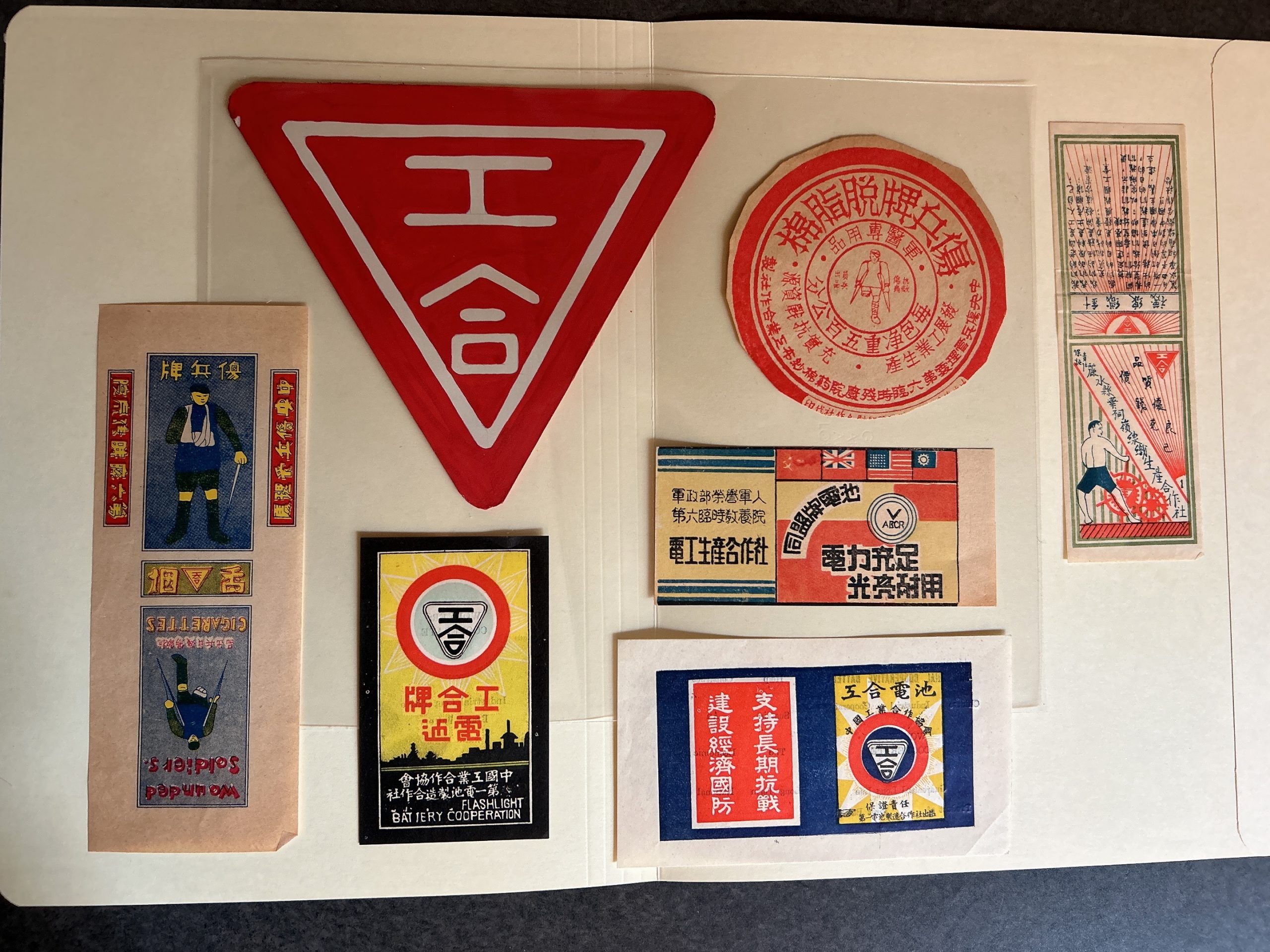At the RBML, we recently installed a small exhibition in the Archivist’s Pick Cubes on materials related to Chinese history and culture, pertaining to the people of the Chinese Republican era (1912-1949) and beyond. These materials were acquired through Columbia affiliates such as alumni, professors, and their family and friends. Many were Chinese intellectuals, diplomats, politicians, and military personnel. These collections have traveled from afar, survived the tumultuous historical events of the Twentieth Century, passed through generations, and eventually found their place in our repository.
This small exhibition showcases only a selection of materials from our vast holdings. The exhibits vary in sizes and material types, including seals, artifacts, letters, documents, ephemera, and photographs. They tell the story of their times, spark new research ideas, and trigger fascination and inspiration.
Below are the items currently on display:
Lao She and the Rickshaw Boy
Chinese author, Lao She (1899-1966), came to the U.S. as a visiting professor between 1946 and 1949, and finished writing Drum Singers and Four Generations Under One Roof during his stay. The portrait was taken in 1946 at the Shelburne Studios, New York. The letter was written in 1948 August 25 from Lao She to his American literary agent, David Lloyd, regarding the copyright of Rickshaw Boy’s English translation.
David Lloyd collection on Lao She
老舍從1946年至1949年期間留美並寫完了《四世同堂》第三部及長篇小說《鼓書藝人》。肖像攝於1946年紐約 Shelburne Studios。信件撰寫於1948年8月26日致經紀人大衛勞埃德,提及駱駝祥子的英文翻譯版權問題以及其他事項。
大衛勞埃德藏老舍檔案

Silk Fan for a Friend
Hu Jieqing (1905-2001), wife of Lao She was a painter and apprentice of Qi Baishi. She hand painted this silk fan and inscribed it to Professor June Rose Garrott in the Summer of 1986. On the back is written a selection of verses from Bai Juyi’s flower poem to accompany the China Rose painting, which symbolizes the professor’s name.
June Rose Garrott papers
此團扇由老舍夫人胡絜青手繪,1984年贈高美華教授。圖中的月季花代表高美華教授的英文名字,後面寫有白居易的詩句。
高美華檔案
Chinese Oral History Interviews
The Chinese oral history project of the East Asian Institute was directed by Prof. C. Martin Wilbur and Prof. Franklin L. Ho in 1958 to document the lives of prominent figures from Republican China who were living abroad at the time. This interview photo captures the first interviewee, Hu Shih, with his interviewer Te Kong Tong during their interview in 1958.
Chinese Oral History Project records
Click for the digitized oral history interview.
1958年, 哥大東亞歷史教授韋慕廷與何廉建立了中國口述歷史項目, 採訪了十幾多位在海外的民國風雲人物, 並為他們撰寫回憶錄以便後人參考。此相片攝於1958年, 作為第一位受訪者胡適(右)與訪談人唐德剛(左)的合照。
中國口述歷史項目檔案
點擊便可瀏覽胡適的電子版口述回憶錄
Traveling to the UN San Francisco Conference
Li Huang’s Diplomat Passport to attend the United Nations San Francisco Conference in 1945. He was one of the representatives of the Chinese delegation to represent the Chinese Youth Party and to sign the UN Charter.
Li Huang papers
李璜代表中國青年黨出席1945年在美國舊金山舉行的《聯合國憲章》制憲會議。此護照紀錄了他來美的旅程。
李璜檔案
Thank You for Saving the Country
During the Sino-Japanese War of 1937-1945, this thank you letter was signed by 1,440 children from Xinhui, Guangdong. It was sent to General Zhang Fakui, thanking him for fighting on behalf of China, 1938.
Zhang Fakui papers
1938年抗戰期間, 一千多名兒童致張發奎將軍的救國感謝信。
張發奎檔案

Peter H. L. and Edith Chang Seals
Zhang Xueliang (known as Peter H. L. Chang, the Young Marshal) was a major figure in the Xi’an Incident, an event which united the Communists and the Nationalists to join forces to fight against the Japanese in the Second Sino-Japanese War. The collection contains over 100 seals in various different sizes and shapes. The dragon embroidered box is used to house some of the seals that were used by him and his spouse, Edith Chang.
Peter H.L. and Edith Chang papers
張學良與趙一荻印章
The Chinese Industrial Cooperative (CIC, also known as Gung-ho, meaning “work together”) is a movement established by a group of westerners and Chinese activists. The CIC sought to mobilize civilians such as the wounded, refugees, women, children, and artists, to aid in industrial production in China during WWII. These labels were used for wartime products produced by the CIC.
Indusco records
產品標籤
中國工合檔案





